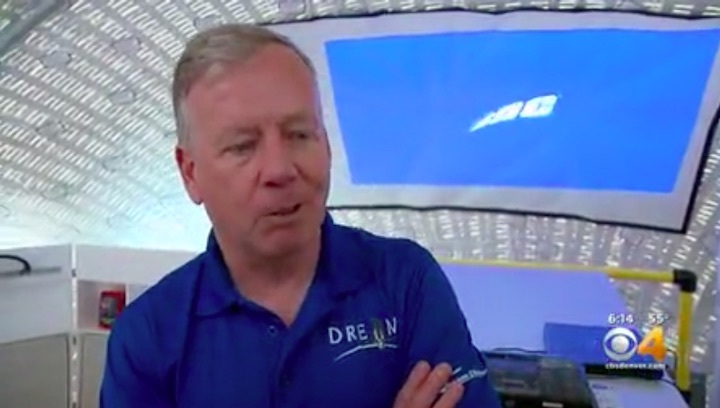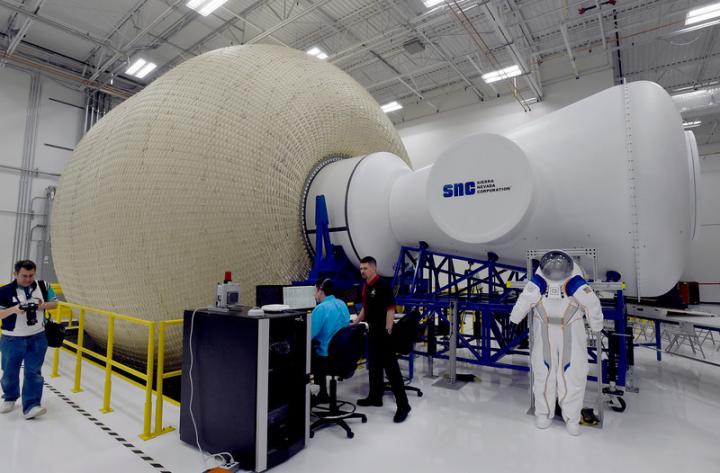"One of the design criteria I gave to my team was, I want this Gateway such that NASA can either launch it on their rocket, on the Space Launch System rocket, or they can launch it on any conventional rocket," Lindsey said.
The inflatable feature means it can fit within a standard 5.2-meter rocket fairing at launch, then swell to its full size of 27 feet in diameter and 27 feet in length when it reaches orbit.
The Power and Propulsion Element prototyped for Gateway leverages Sierra Nevada's Dream Chaser spacecraft cargo module systems, as well as hardware from its space technologies product line, aiming for a rapid, low-risk development while still exceeding NASA's fuel requirements.
The Gateway vehicle is designed to support a 1,100-day mission orbiting the moon. It also can support deep space missions. The Gateway can accommodate up to four astronauts at a time, who would typically be on board for missions of 30 to 90 days per year.
Guests at the Sierra Nevada facility on Tuesday were afforded the opportunity to tour the inside of the fully inflated habitat prototype. They inspected features ranging from its Vectran-weave exterior to the sleep and hygiene quarters, medical and sick bay, waste collection system — that's toilet, to the Earth-bound — robotics work stations, exercise space and the Astro Garden, capable of producing a head of lettuce (for example) in 24 days.
"Having something that's green, and something that's alive, is psychologically great for them because otherwise, everything is really sterile up there," said Kimberly Schwandt, Sierra Nevada's senior corporate communications manager.
One of those surveying the lunar travel prototypes on Tuesday was Boulder-area space writer Leonard David, whose latest book, "Moon Rush — The New Space Race" is to be published in May by National Geographic.
He applauds NASA's attempt to get back into manned space exploration, but noted the vulnerability of its prospects to the shifting sands of political sentiment at a time when America is so politically divided.
"The administration changes (over time) have been deadly to the space program in some of the larger initiatives," David said. "All of this stuff may collapse."
However, he added, "If NASA doesn't do it, other countries are going to step in — particularly China."
Charlie Brennan: 303-473-1327, brennanc@dailycamera.com or twitter.com/chasbrennan










